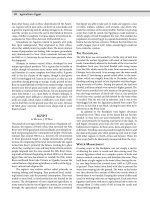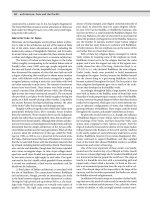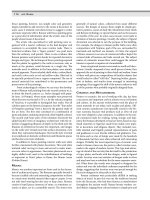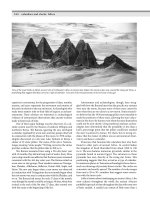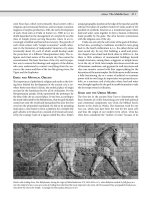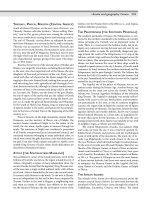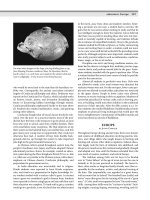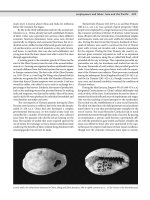Encyclopedia of society and culture in the ancient world ( PDFDrive ) 544
Bạn đang xem bản rút gọn của tài liệu. Xem và tải ngay bản đầy đủ của tài liệu tại đây (57.9 KB, 1 trang )
G
▶ gender structures and roles
introduction
Much of what historians know, or think they know, about
gender relationships in prehistory comes primarily from
burial practices and artwork. Surviving tombs provide insight, for example, into the status of women and men, and
artwork depicts men and women engaged in various activities that were likely an outgrowth of assumptions about gender in that culture. During later periods written documents
survive that shed light on gender issues, at least in some parts
of the world.
The concept of gender and gender roles was felt in a number of areas of ancient life, including power and rulership, religion, family structure, and occupation, and these roles were
typically taught to both boys and girls early in life through
initiation rituals and segregation of the sexes. With regard
to power, it comes as no surprise that most ancient world
cultures were dominated by men, with women playing more
passive, domestic roles. This was not universally true at all
times and all places, however. From time to time—in ancient
Greece and Egypt, for example—a powerful woman emerged
who assumed the reins of power. In doing so, though, she
probably had to take on many stereotypical masculine traits,
such as ruthlessness.
In religion men tended to serve as priests, shamans, and
religious gurus, but again, this was not universally true. In
the ancient Americas, for example, archaeological evidence
suggests that women often served as shamans and priests. It
was also common in many cultures for its pantheon of deities
to include goddesses as well as gods. The ancient Greeks and
Romans are prominent in this regard, but examples of goddess figures can be found in ancient cultures the world over.
These goddess figures were thought to have ruled over various spheres of life, and this idea would have affected concepts
of proper gender roles and expectations.
With regard to family structure, the status and role of
women was probably determined in large part by the economic conditions of the culture. In hunter-gatherer societies
it was long assumed that men did both the hunting and gathering while women tended to the home. Some scholars dispute this assumption, arguing that women took an active role
in gathering food and may very well have hunted small game.
As cultures turned to agriculture and became more sedentary
and complex, gender specialization became the norm, with
men involved in public affairs and women performing primarily domestic tasks.
Women may have taken primary responsibility for domestic tasks, but in many cultures they also held occupations, primarily crafts. In the ancient Americas, for example,
women were primarily responsible for such activities as textile production and weaving. Because a great deal of craftwork took place in homes, it is reasonable to conclude that
women took part as potters, wood carvers, and the like. Men
generally were of higher status in patriarchal cultures and
had authority over their wives and family, but some cultures,
particularly in Africa, were more matriarchal, with the wife
and mother ruling in the home. It was not uncommon in
many cultures for men and women to spend most of their
time apart, with women living in separate “women’s quarters” and men taking part in separate activities. It should be
493
